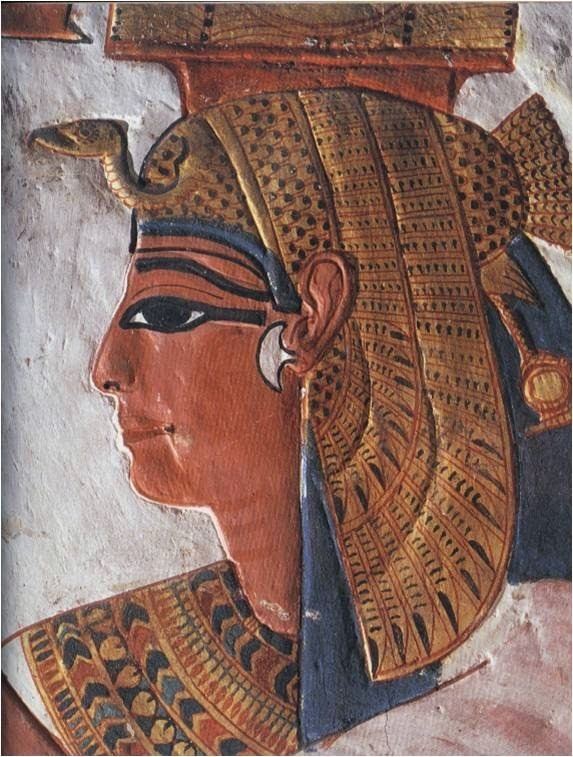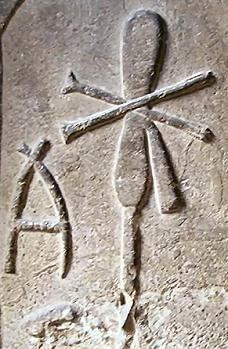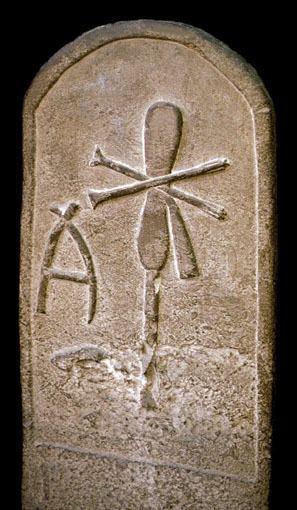Burial Tomb Y, Umm el-Qa'ab Parents Djer Grandchild Anedjib | Spouse Djet Children Den Grandparents Hor-Aha, Khenthap | |
 | ||
Similar Den, Djet, Anedjib, Djer, Hor‑Aha | ||
Merneith (also written Meritneith and Meryt-Neith) was a consort and a regent of Ancient Egypt during the first dynasty. She may have been a ruler of Egypt in her own right, based on several official records – if this was the case, she may have been the first female pharaoh and the earliest queen regnant in recorded history. Her rule occurred during the thirtieth century B.C., for an undetermined period. Merneith’s name means "Beloved by Neith" and her stela contains symbols of that deity. She may have been Djer's daughter, and was probably Djet's senior royal wife. The former meant that she would have been the great-granddaughter of unified Egypt's first Pharaoh, Narmer. She was also the mother of Den, her successor.
Contents

Family

Merneith is linked in a variety of seal impressions and inscribed bowls with the kings Djer, Djet and Den. Merneith may have been the daughter of Djer, but there is no conclusive evidence. As the mother of Den, it is likely that Merneith was the wife of Djet. No information about the identity of her mother has been found.

A clay seal found in the tomb of her son, Den, was engraved with "King's Mother, Merneith". It also is known that Den’s father was Djet, making it thus likely, that Merneith was Djet’s royal wife.
Biography

Merneith is believed to have become ruler upon the death of Djet. The title she held, however, is debated. It is possible that her son Den was too young to rule when Djet died, so she may have ruled as regent until Den was old enough to be the king in his own right. Before her, Neithhotep is believed to have ruled in the same way after her husband King Narmer died, but whose son was too young to rule. Her name was written on a Naqada seal inside a serekh, which was the way the kings' names were written. This would mean Merneith may have actually been the second female in Egypt's first dynasty to have ruled as pharaoh.

The strongest evidence that Merneith was a ruler of Egypt is her tomb. This tomb in Abydos (Tomb Y) is unique among the otherwise exclusively male tombs. Merneith was buried close to Djet and Den. Her tomb is of the same scale as the tombs of the kings of that period. Two grave stelae bearing her name were discovered near her tomb. Merneith's name is not included in the king lists from the New Kingdom. A seal containing a list of pharaohs of the first dynasty was found in the tomb of Qa'a, the third known pharaoh after Den, her son. However, this list does not mention the reign of Merneith.
A few other pieces of evidence exist elsewhere about Merneith:
Tomb
At Abydos, the tomb belonging to Merneith was found in an area associated with other pharaohs of the first dynasty, Umm el-Qa'ab. Two stelae made of stone, identifying the tomb as hers, were found at the site.
In 1900 Flinders Petrie discovered Merneith’s tomb and, because of its nature, believed it belonged to a previously unknown pharaoh. The tomb was excavated and was shown to contain a large underground chamber, lined with mud bricks, which was surrounded by rows of small satellite burials, with at least 40 subsidiary graves for servants.
The servants were thought to assist the ruler in the afterlife. The burial of servants with a ruler was a consistent practice in the tombs of the early first dynasty pharaohs. Large numbers of sacrificial assets were buried in her tomb complex as well, which is another honor afforded to pharaohs that provided the ruler with powerful animals for eternal life. This first dynasty burial complex was very important in the Egyptian religious tradition and its importance grew as the culture endured.
Inside her tomb archaeologists discovered a solar boat that would allow her to travel with the sun deity in the afterlife.
Abydos was the site of many ancient temples, including Umm el-Qa'ab, the royal necropolis, where early pharaohs were entombed. These tombs began to be seen as extremely significant burials and in later times it became desirable to be buried in the area, leading to the growth of the town's importance as a cult site.
